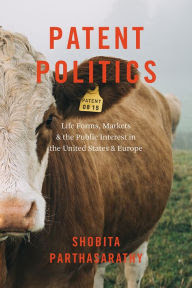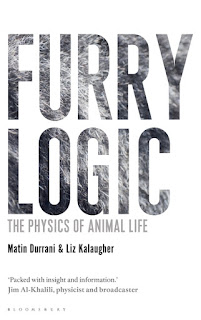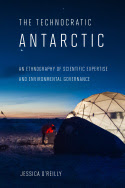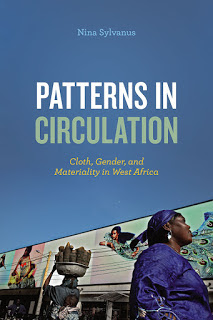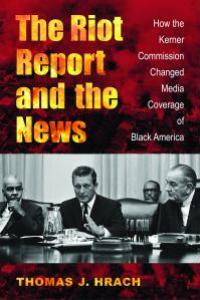 R. Scott Hanson is a Lecturer in History at the University of Pennsylvania and an Affiliate of the Pluralism Project at Harvard University.
R. Scott Hanson is a Lecturer in History at the University of Pennsylvania and an Affiliate of the Pluralism Project at Harvard University.He applied the “Page 99 Test” to City of Gods: Religious Freedom, Immigration, and Pluralism in Flushing, Queens, his first book, and reported the following:
From page 99 (Chapter 3: “Beyond Protestant-Catholic-Jew: The Immigration Act of 1965 and the Religions of New Immigrants in Flushing”):Visit R. Scott Hanson's website.
“Little Kashi”: Hinduism in FlushingThis section on page 99 is a nice excerpt. I love the quotation from Bharati Mukherjee’s novel, Jasmine, about the early South Asian Indian and Pakistani immigrant community in Flushing in the 1970s-80s. I’m especially happy to offer this small tribute to her work, as Bharati Mukherjee passed away on January 28 at the age of 76. Despite the main character’s somewhat negative view of Flushing and the insular immigrant community then, Mukherjee’s novel captures something of that time and place in the wake of the Immigration Act of 1965 when new immigrants would begin to transform the religious landscape of the Flushing from Protestant-Catholic-Jewish to a microcosm of world religions.
There were thirty-two Indian families in our building of fifty apartments, so specialized as to language, religion, caste, and profession that we did not need to fraternize with anyone but other educated Punjabi-speaking Hindu Jats. There were six families more or less like [ours] (plus Punjabi-speaking Sikh families who seemed friendly in the elevator and politically tame, though we didn’t mingle), and three of the families also had aged parents living in.In Jasmine, Bharati Mukherjee’s novel about a Punjabi Hindu woman’s life as an Indian immigrant in late-twentieth-century America, the main character lives briefly in Flushing and encounters an already large and well-established South Asian community. Amazed by the variety of ethnic stores and services in the Indo-Pak-Bangla-Afghani shopping district on Main Street (perhaps the first Little India in America, though not the largest), Jasmine later reflects back on her time there: “Flushing was safe, a cocoon to hatch out of.” The community had become so settled that the degree of replicating an entire culture approached what sociologists would call “institutional completeness,” with South Asian groceries; appliance, video, jewelry, and sari stores; beauty salons; newsstands; car services; restaurants; and sweet shops—as well as places of worship and other ethnic organizations. Like other upwardly mobile immigrants who eventually find the familiarity of the ethnic enclave stifling, Jasmine grows restless and soon takes “the #7 train out of the ghetto.” Many who come back still remember Flushing as a primarily South Asian community, and they are surprised to see how it has absorbed other new immigrant groups. Taiwanese and Korean immigrants eventually took over more area as their businesses and institutions grew in central downtown Flushing, but in the 1970s through the 1980s (Jasmine was published in 1989), South Asians were the most visible new immigrant group, and their presence was felt more.
—Bharati Mukherjee, Jasmine
Similar and even larger South Asian commercial areas would form later in Jackson Heights, Richmond Hill, in two areas of Manhattan, and in nearby Edison, New Jersey, as enterprising pioneers from Flushing moved on, but it would remain the mother of the South Asian community in America. People stayed and returned to Flushing not so much for the shops but because it was also where most of the first temples, gurdwaras, and mosques were established. It was a “Little India,” but, more specifically, it also became, as a woman at one of the newer Hindu temples in Flushing put it, a “Little Kashi”—a reference to the city of Varanasi (or Benares or Banaras), India, to which Hindus make pilgrimages to visit ancient temples, bathe in the Ganges River for ritual purification, and where many hope to be taken when they die to have their cremated remains deposited in the water. Some South Asians in America still wish to make that final return to India, but, until then, Flushing would be the principal spiritual location for the greater tristate area (New York, New Jersey, and Connecticut) and beyond.
You don’t get a sense of the earlier/colonial history of Flushing in this snippet, but the first half of the book covers the period from 1645-1965 tracing the often overlooked history of the origin and defense of religious freedom in Vlissingen (which later anglicized to Flushing when New Amsterdam became New York), its growth up through the 19th century, and its rise to international prominence during the 1939-40 and 1964-65 Worlds Fairs. The excerpt above comes from a second half that focuses on the period from 1965-2001 and a more ethnographic analysis of the recent history of Flushing leading up to 9/11.
The story of Flushing has proven to be timely in light of the recent election of Donald Trump, with the rise in hate crimes against Muslims and other minorities, his controversial travel ban, and talk of a wall along the Mexican border. Many areas that have been undergoing rapid demographic change for the first time in their history voted for Trump, but Flushing shows that it is possible for areas like this to learn to live and thrive with diversity.
--Marshal Zeringue




